Work by Apprentices
John Bewick, Robert Elliot Bewick, Luke Clennell and Robert Johnson
An Apprenticeship was a contract governed by a legal document called an Indenture, usually lasting for seven years (as had Bewick's), though it could be terminated on either side for a variety of reasons. The master would undertake to give instruction in the relevant skills, and the apprentice would learn to perform a range of activities under this guidance, learning on the job all the time. John Bewick's indentures were cancelled after five years, when he went to London. In his book Thomas Bewick's Apprentices, Alan Angus lists a total of 30 apprentices in the Bewick workshop between 1775 and 1828, when Bewick died. These four apprentices were individuals who made a name for themselves in one or other aspect of the wood-engraved work produced by the workshop.
John Bewick (1760-1795)
John Bewick was Thomas Bewick's younger brother and his first apprentice, serving from 1777 until 1782. It is difficult to identify workshop engravings from his apprentice years as definitely his. He went to London in 1786, making a career as a wood engraver and book illustrator, being perhaps the first person to make a living entirely at this occupation. He contributed to at least sixty titles in this short career.
The four examples of his work shown here are:
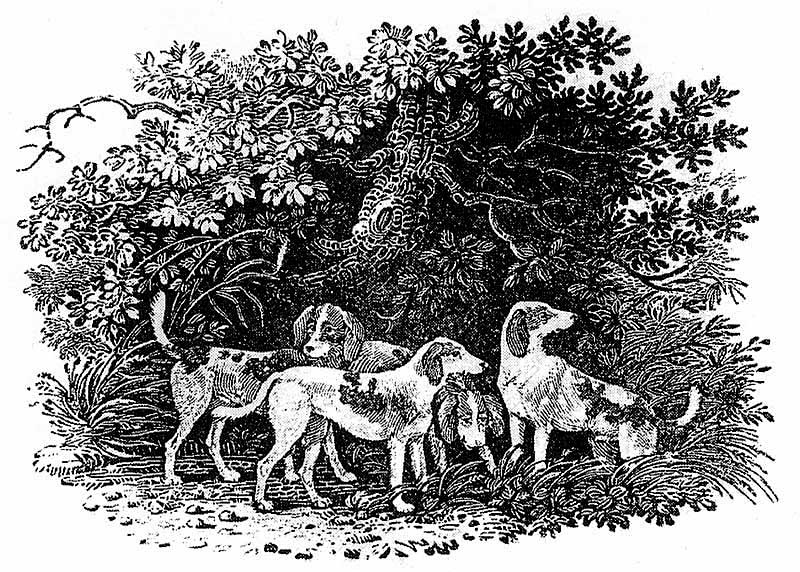
(First) A tail-piece vignette drawn by John but cut by Thomas, for Somervile's The Chase (1796).
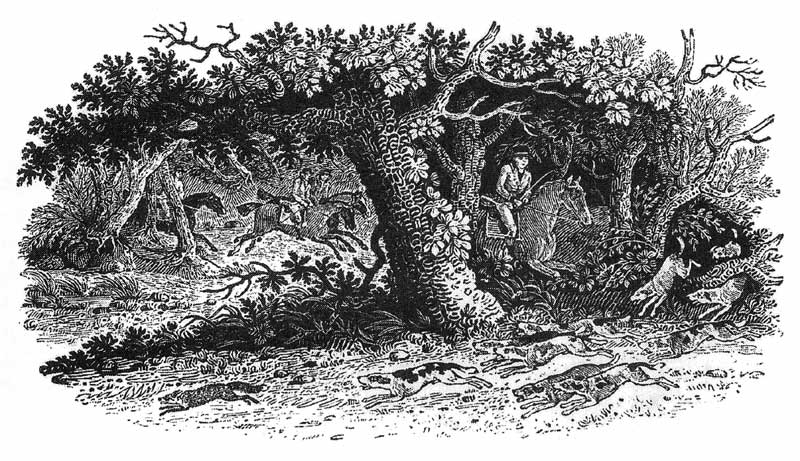
(Second) For The Chase, drawn on the wood by John, cut by Thomas, 1796.
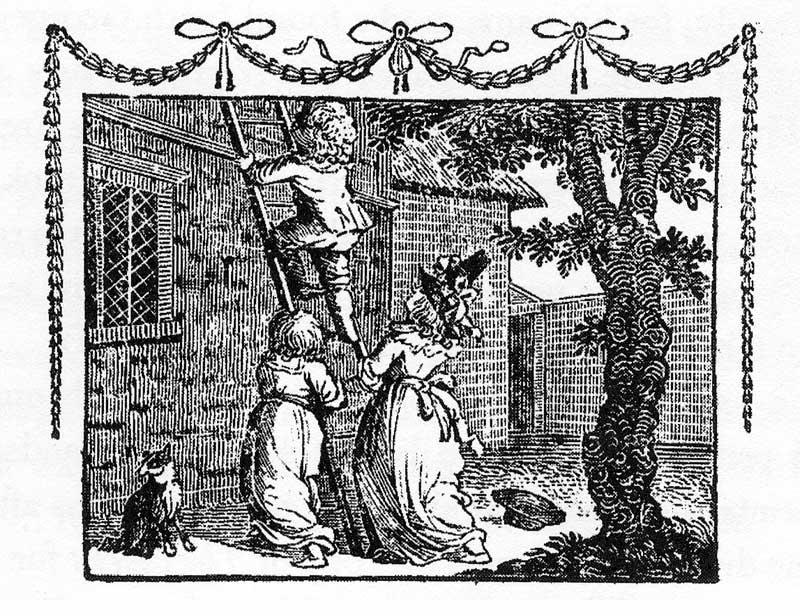
(Third) 'The Sparrow's Nest' from The Looking-Glass for the Mind, 1792, drawn and engraved by John.
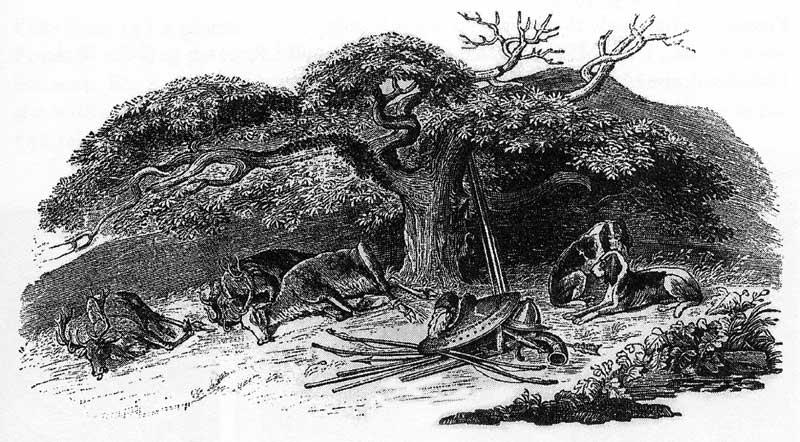
(Fourth) For Chevy Chase, 1791, drawn and cut by John.
The Chase vignettes were drawn on the wood by John just before he died of tuberculosis in December 1795. He did not live to engrave the drawings, and Thomas took over and cut the woodblocks for the publisher, William Bulmer, a prominent printer and publisher in London at his Shakespeare Printing Office. He was a friend of both the Bewick brothers, himself being originally a Newcastle man. In the Preface to the book Bulmer wrote: 'The subjects which ornament the present volume, being entirely composed of Landscape Scenery and Animals, are adapted, above all, to display the beauties of Wood Engraving. 'Unfortunately for his friends, and the admirers of the art of Engraving on Wood, I have the painful task of announcing the death of my early acquaintance and friend, the younger Mr Bewick. He died at Ovingham, on the banks of the Tyne, in December last, of a pulmonary complaint. Previously, however, to his departure from London for the place of his nativity, he had prepared, and indeed finished on wood, the whole of his designs, except one, which embellish the Chase; they may therefore be considered as the last efforts of this ingenious and much to be lamented Artist. "In executing the Engravings, his Brother, Mt Thomas Bewick, has bestowed every possible care; and the beautiful effect produced from their joint labours, will, it is presumed, fully meet the approbation of the Subscribers.' The book is also a wonderful example of the Bulmer typeface which is used for the Cherryburn Times, the Journal of the Bewick Society.
Robert Elliot Bewick (1788-1849)
He was Thomas Bewick's only son and served his apprenticeship from 1804 to 1810. In 1812 he was made a partner in the business, which he carried on after his father's death until his own. He was a skilled performer on the Northumbrian small pipes (bagpipes).
The four engravings here shown are:
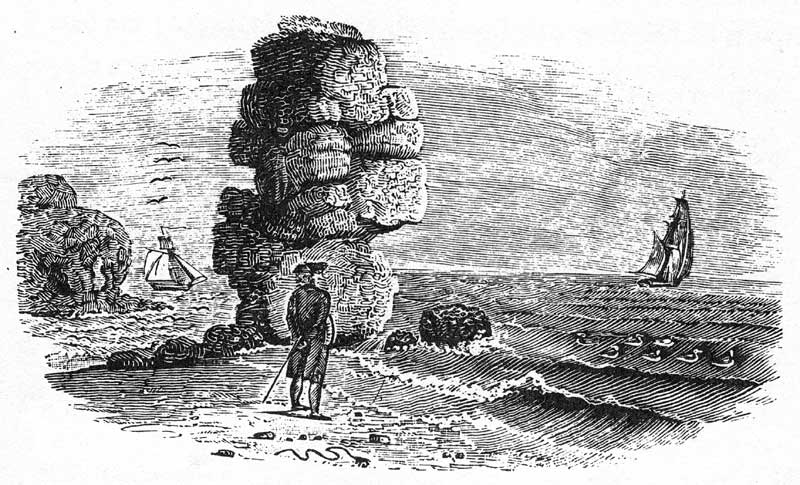
(First) A tail-piece for the unpublished History of British Fishes, no date.
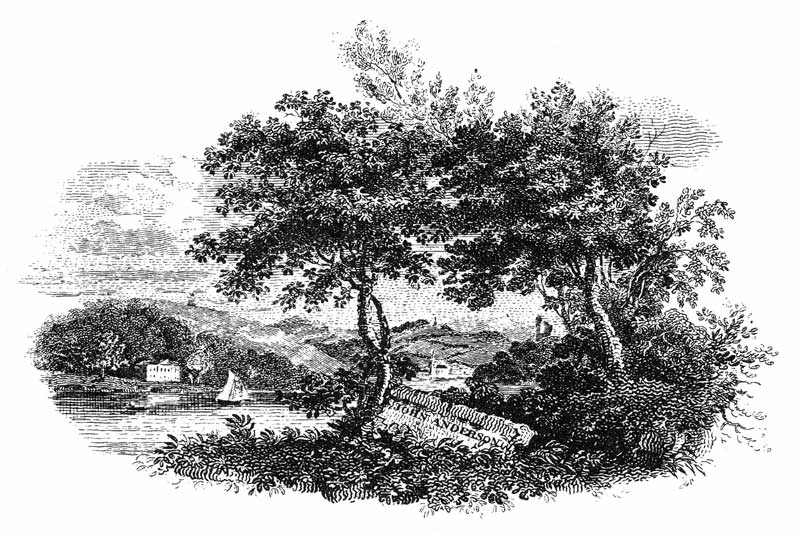
(Second) Etching on copper for a bookplate for John Anderson, surgeon, of Newcastle, 1810.
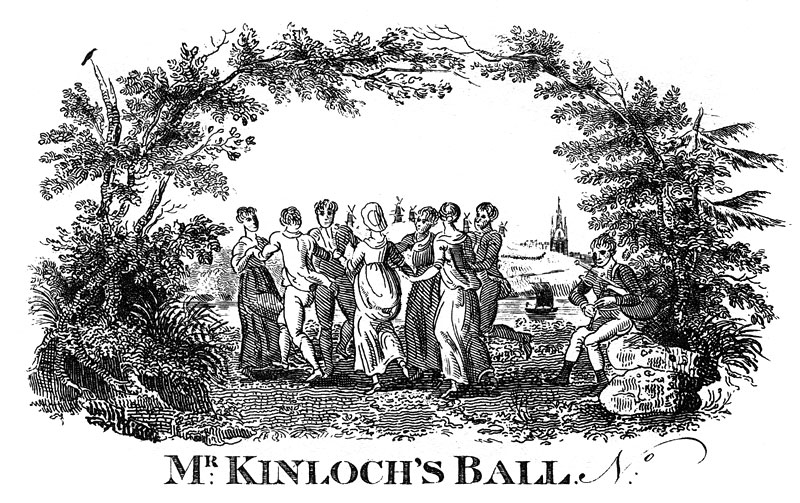
(Third) Copperplate etching of a drawing by Thomas Bewick for Alexander Kinloch, a local dancing master, c.1812. The musician on the right could be Robert Bewick.
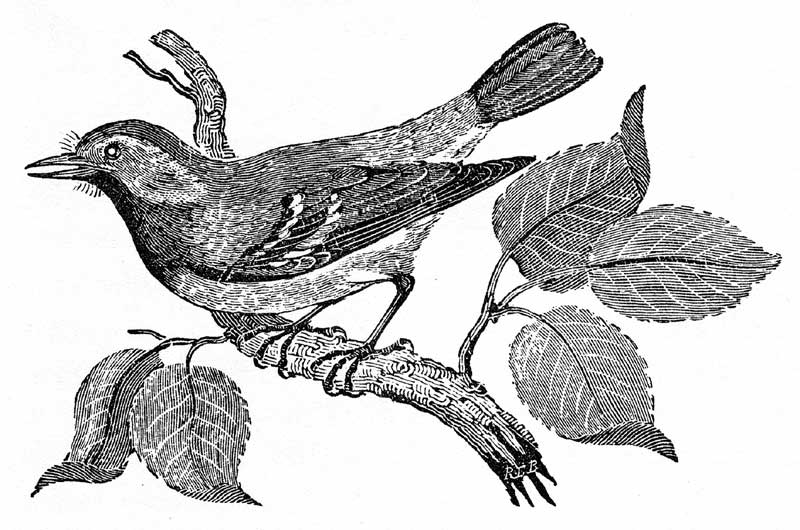
(Fourth) This engraving of the Black-throated Green Warbler was first published in Julia Boyd's Bewick Gleanings, 1886.
Luke Clennell (1781-1840)
Clennell started in the workshop on his sixteenth birthday in 1797, completing in 1804. He stayed a few months, then moved to London, where he had some notable successes until 1817, when he broke down mentally, never recovering. He was one of the most accomplished of all the apprentices. A characteristic of his style is the sweeping, large–leaved foliage in the foreground of many of his vignettes.
Several of the tail-pieces in British Birds, II are his:
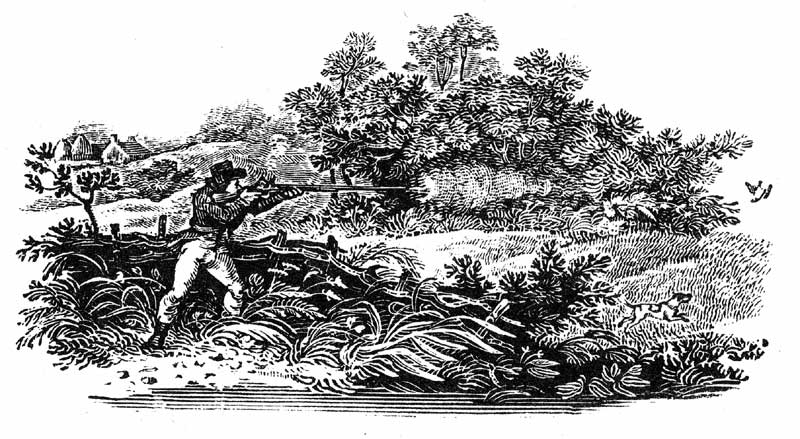
(First) 'Shooting the Bird' is on p. 82.
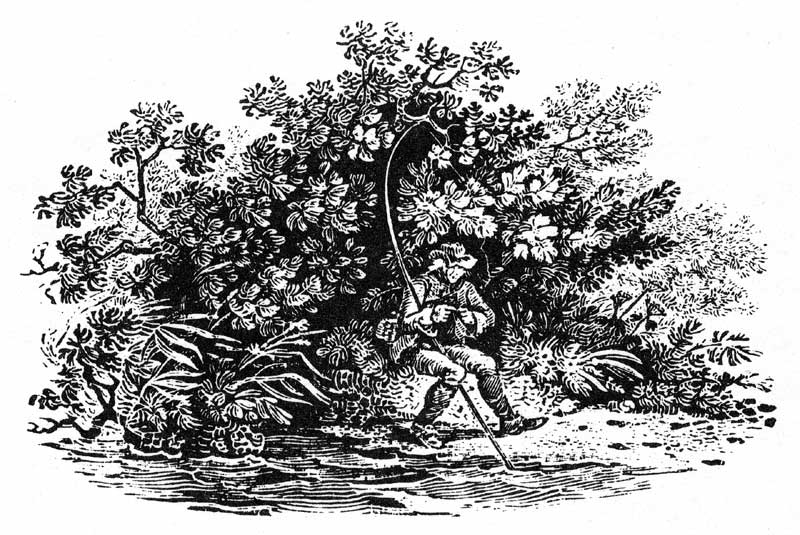
(Second) 'The Angler' is on p.97.
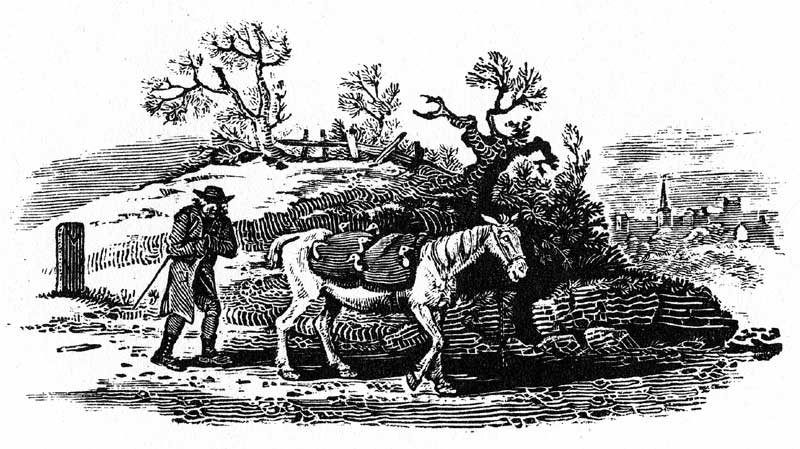
(Third) 'Geese carried to Market' is on p.286.
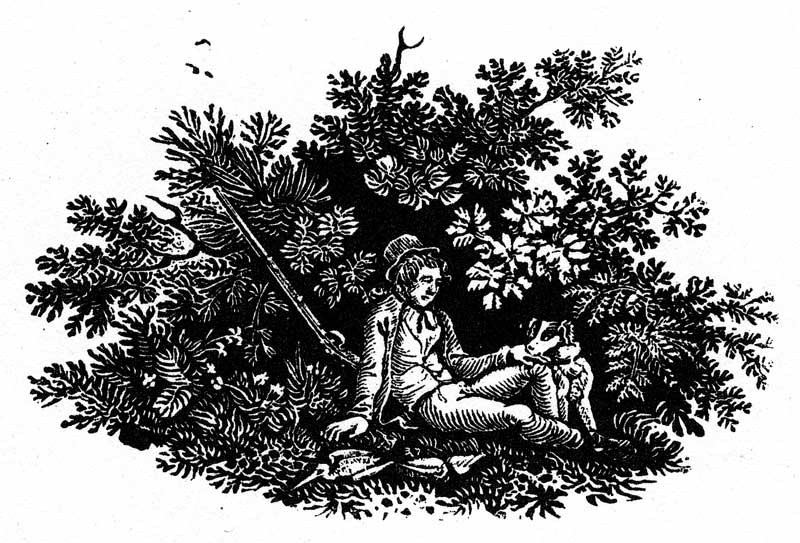
(Fourth) 'A Tired Sportsman' is on p.202.
Robert Johnson (1771-1796)
He seems to have started in the workshop in 1784, though he was technically too young to be apprenticed. It seems he did not like wood-engraving, much preferring drawing and copper-engraving. His mother had been a servant at Cherryburn in her younger days. His health was problematic, which led to him being sent out to draw in the open air. Bewick prized his drawings and would give him a rough sketch to work up to a coloured drawing, which would then be cut by Bewick himself or by another apprentice. He completed his apprenticeship in August, 1794 and died just over a year later in Scotland. It is appropriate to show the drawings here rather than the wood-engravings cut from them. The originals are in the collection of the British Museum.
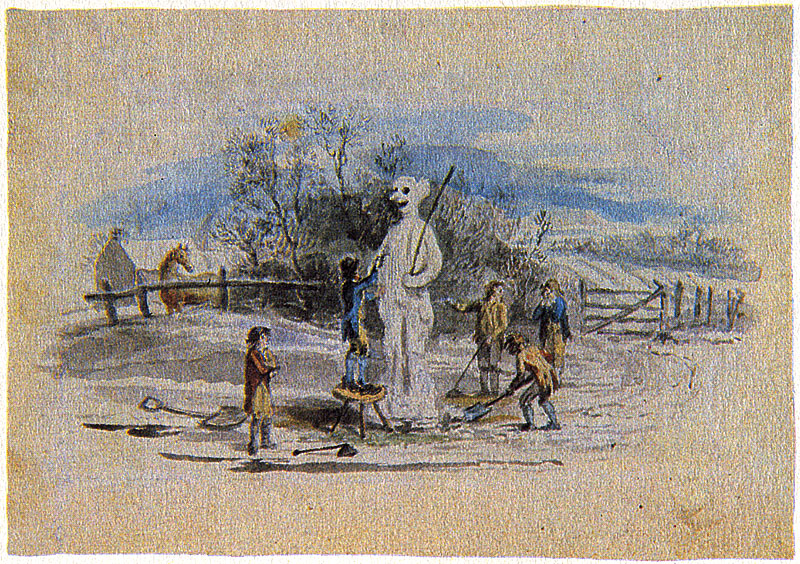
(First) 'The Snowman'.
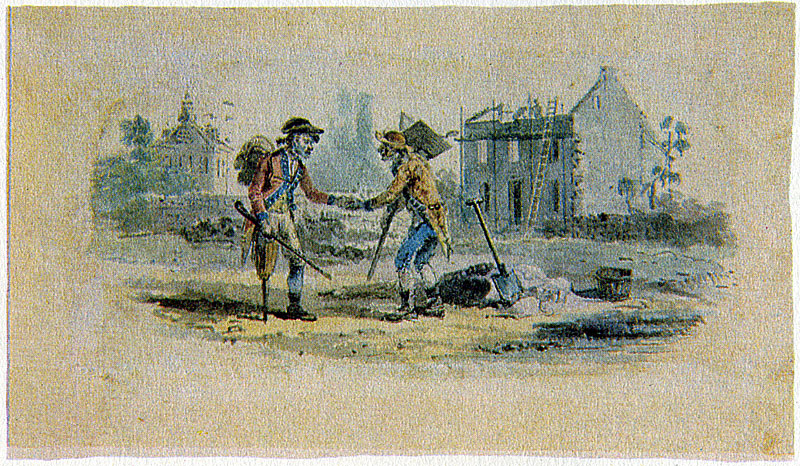
(Second) 'Two Old Soldiers'.
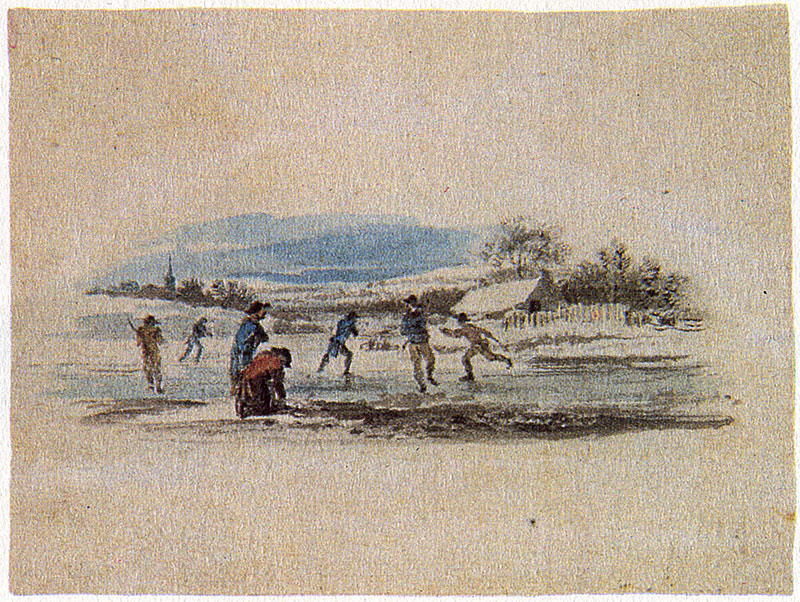
(Third) 'Skating on a Frozen River'.
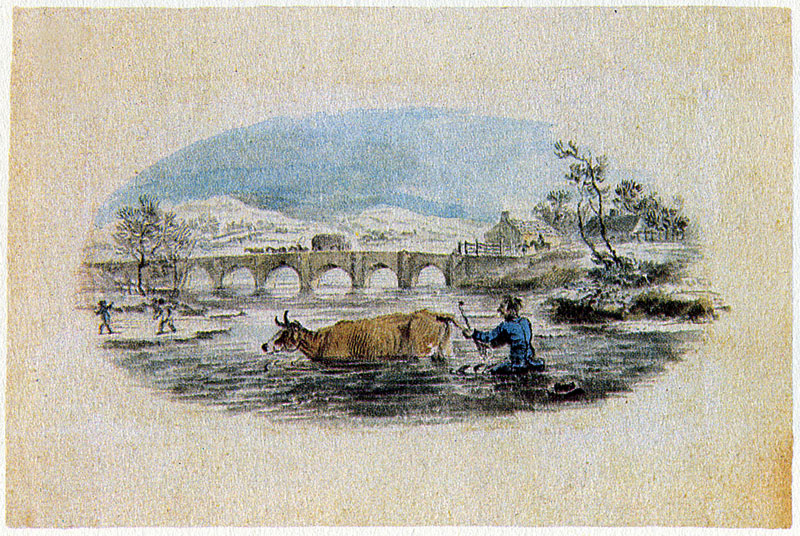
(Fourth) 'The Cow's tail' or 'Saving the Toll'.